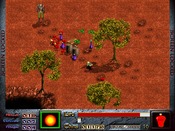Reply to Re: scripting
If you don't have an account, just leave the password field blank.
Any sprite (with brain 9 ) can attack any other sprite if you know the sprite # or have a variable set to it. I used a script and a global variable just for that perpose. eg call the script "look.c". All it contains is;
void main ()
{
&look = ¤t_sprite;
}
Set look.c as the script of the victim sprite(or any sprite you want controlled by anothers' script).
Then in the attackers script, sp_attack(¤t_sprite,&look);
Of course, if the sprite getting attacked already has a script, just set a global variable to ¤t_sprite within its script, so any other script can ID that sprite.
As for dot depth and hardboxes, I would refer to the tutorial on the dink.ini editing. For myself i once copied some graphics into the original, used its uber editor, then copied back the dink.ini changes, but don't use the uber editor in your project folder!.
And you are right about the graphics organising. Hey, re-arranging those might be a good idea in the seleton dmod. You could redo them in your own, but its a bit of work.
void main ()
{
&look = ¤t_sprite;
}
Set look.c as the script of the victim sprite(or any sprite you want controlled by anothers' script).
Then in the attackers script, sp_attack(¤t_sprite,&look);
Of course, if the sprite getting attacked already has a script, just set a global variable to ¤t_sprite within its script, so any other script can ID that sprite.
As for dot depth and hardboxes, I would refer to the tutorial on the dink.ini editing. For myself i once copied some graphics into the original, used its uber editor, then copied back the dink.ini changes, but don't use the uber editor in your project folder!.
And you are right about the graphics organising. Hey, re-arranging those might be a good idea in the seleton dmod. You could redo them in your own, but its a bit of work.









